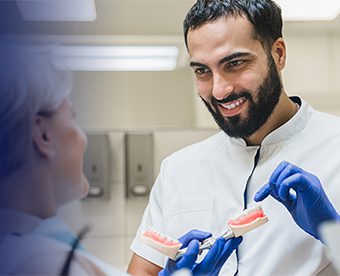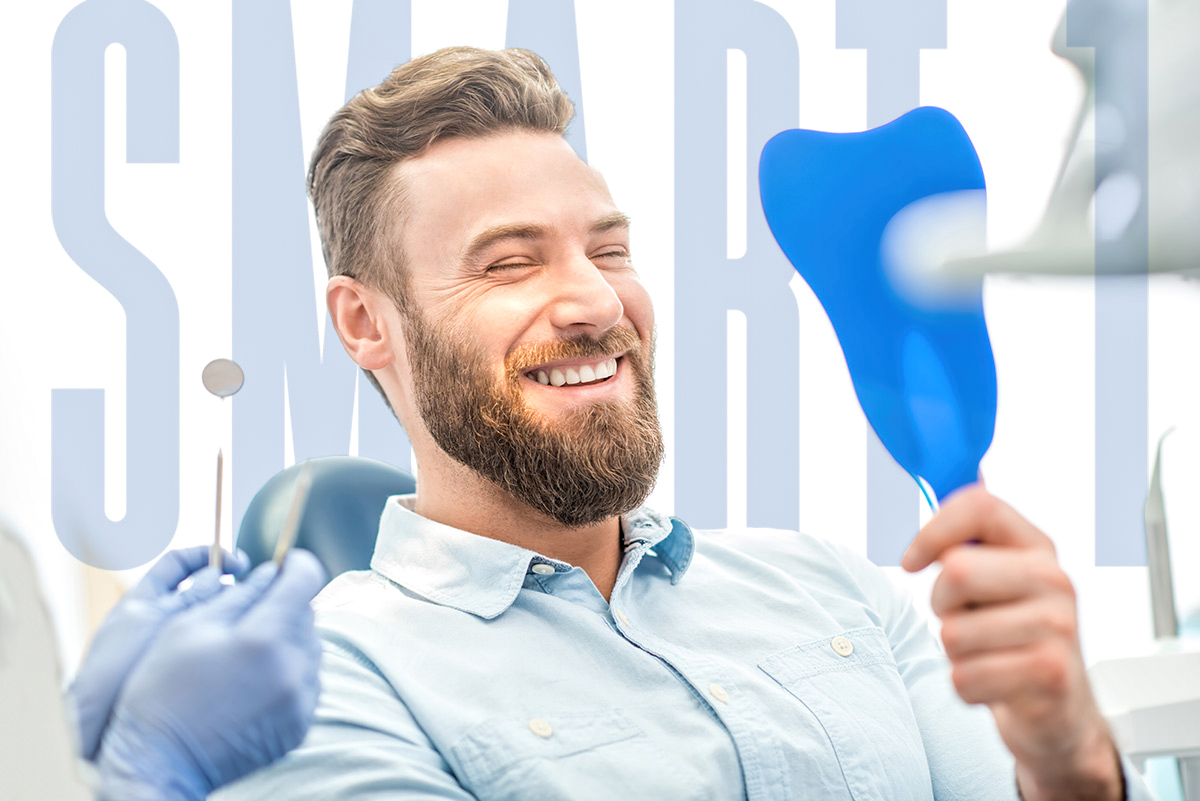Dental implants are the restoration of choice for edentulous patients.
More and more clinicians are placing dental implants, making this treatment option one of the fastest-growing areas in dentistry.
Implants help to preserve adjacent teeth by eliminating the need to prep for other restorative procedures such as fixed or removable treatment options. Implants also help to preserve alveolar bone.
Along with the treatment option appealing to dentists, patients are becoming increasingly knowledgeable about these procedures. As a result, they have high expectations that this modality will replace their missing dentition both functionally and esthetically.
Emergence Profile
One area that will help ensure optimal end results in implant treatment is with gingival tissue formation and proper emergence profile. These issues are addressed during the healing phase of implant placement.
Often, stock circular healing abutments are placed at the implant site to help with tissue formation. However, this type of healing abutment does not properly represent the natural emergence of a tooth through bone and tissue. Each tooth has a unique emergence profile that is indicative of its place within the mouth.
Other types of stock healing abutments attempt a more realistic emergence by flaring the abutment; however, they still fall short on providing the ideal implant site to create the ideal emergence profile.
When these stock healing abutments are used, the fabrication of the implant restoration will match the area created in the soft tissue. This results in a restoration that traps food, does not fit passively or does not seat at all. In addition, when the soft tissue and restoration do not fit well and do not have a proper emergence profile, tissue recession can result.
Guided Surgery Plan
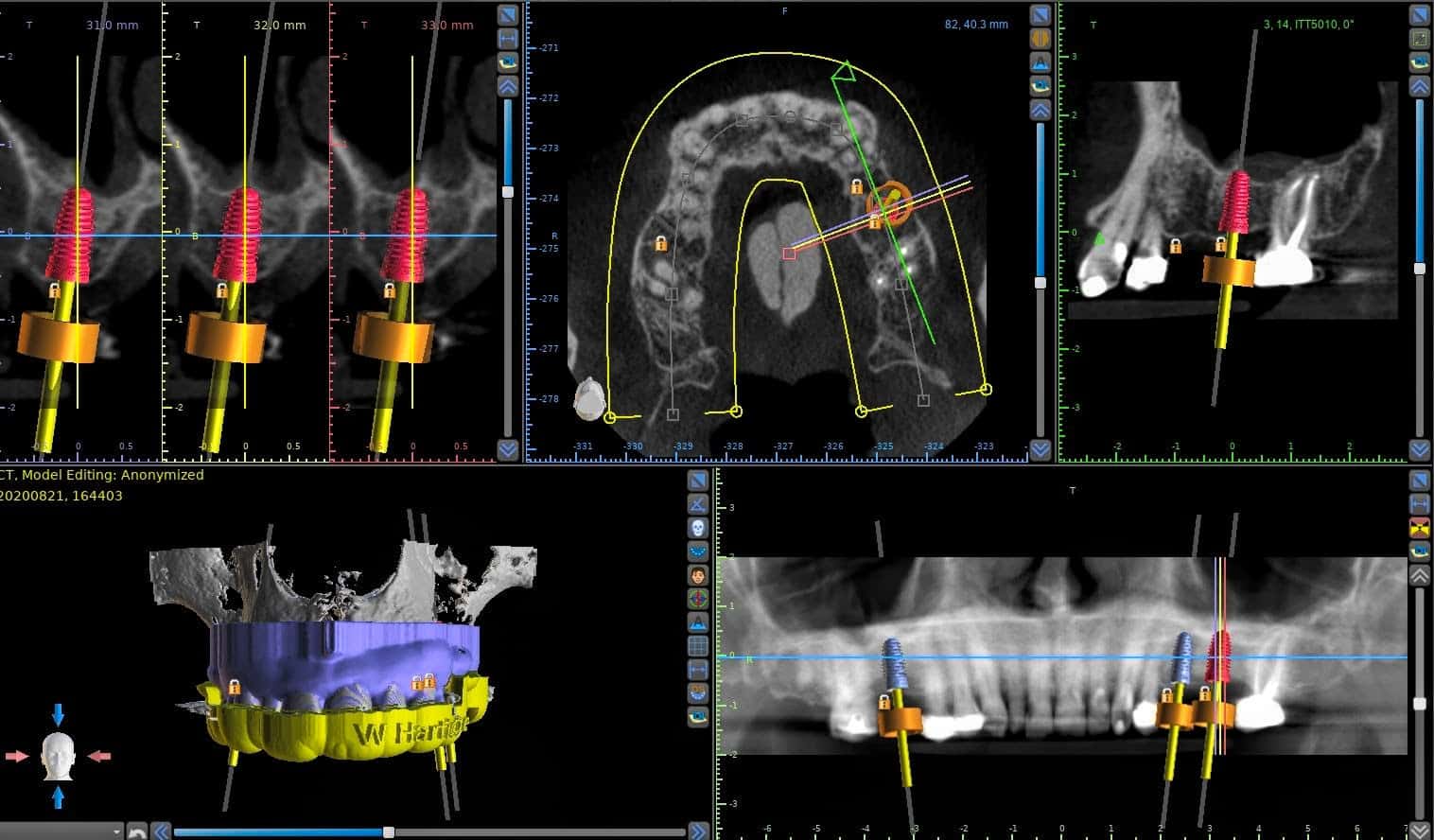
One of the options that can significantly influence the outcome of implant cases and ensure healthy tissue, high esthetics, functionality, and a natural emergence profile is through a guided surgery plan. There are two options in guided surgery:
-
-
- The clinician will design a guided surgery appliance using software such as Blue Sky. When the design is completed, the file is sent to Burbank Dental Lab, where a guided surgery appliance is fabricated.
- The clinician can delegate designing the guided surgery appliance to Burbank Dental Lab’s team. Here the clinician will be able to approve the design and proposed plan. With Blue Sky design software (image is shown above), the interface can be shared with the clinician as well as any other necessary party involved in the case.
-
Guided Surgery Workflow
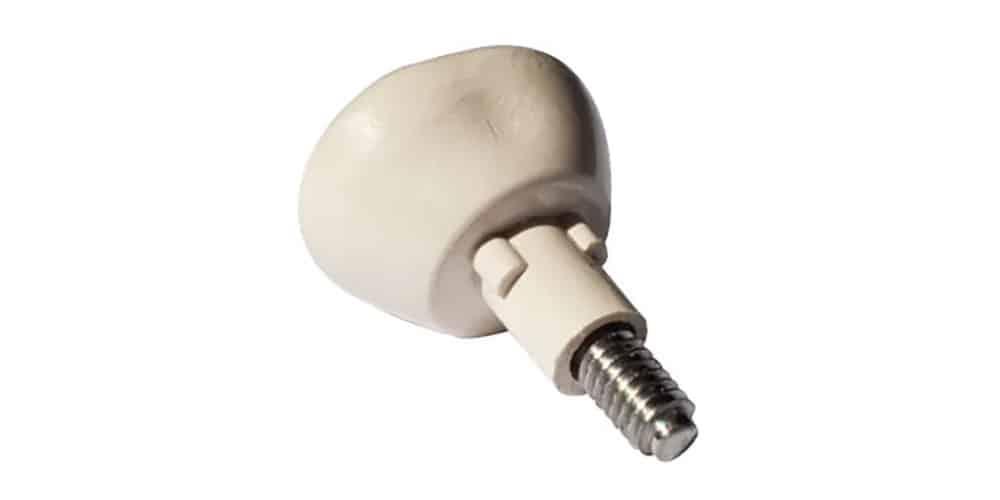
With this type of treatment planning, a custom healing abutment (see the image shown above) or a provisional screw-retained restoration can be fabricated. These are fabricated as titanium cylinders with PMMA that are bonded together.
The planning steps are as follows:
- Import a DICOM file from a cone-beam computed tomography (CBCT) scan as well as the STL file capturing the dentition into the software.
- Merge the files together and digitally place the restoration in position.
- Locate the alveolar nerve as it must be avoided when placing the implant.
- Identify the implant within the software and place in the desired location
- Locate the appropriate surgery kit and materials needed to place the implant in the ideal position.
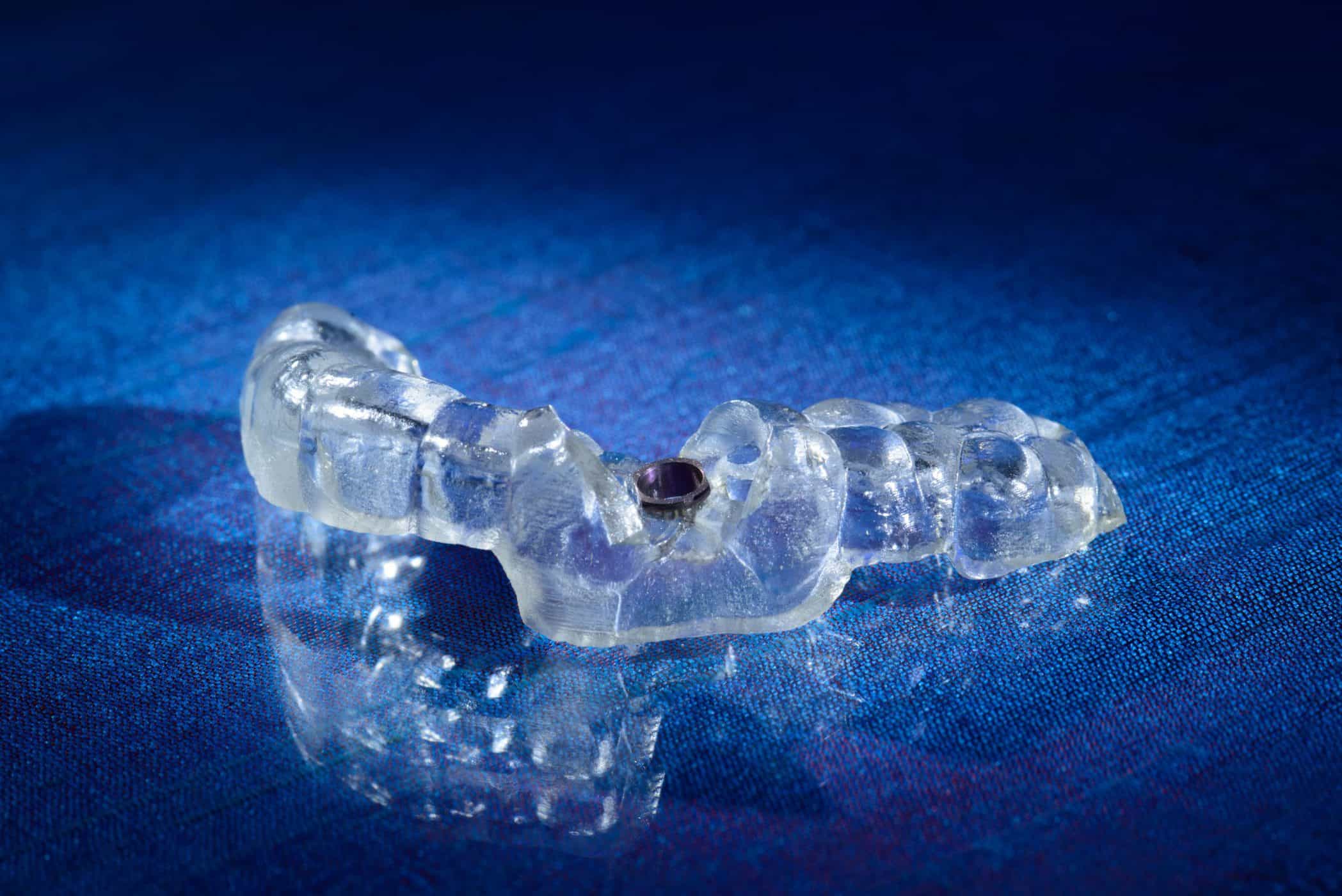
At this point, a digital guide is now designed and ready to be fabricated. Burbank Dental Lab’s surgical guides (see the image shown above) provide the following:
- Precision as each guide is verified on a solid model
- FDA approved resin
- Precision guide rings placed in the guides based on the surgical system being used
- Quick turnaround time, allowing for a more efficient workflow
As stated previously, success in implant cases requires proper tissue management. Through a guided surgery method, custom healing abutments and other custom immediate-load temporary restorations can be designed and fabricated. This method will allow the implant site to heal, resulting in the ideal shaping of the tissue.
With custom-designed healing abutments, the interproximal papilla is encouraged to form and minimize the possibility of spaces forming. This significantly helps to improve esthetics as well as improve oral hygiene.
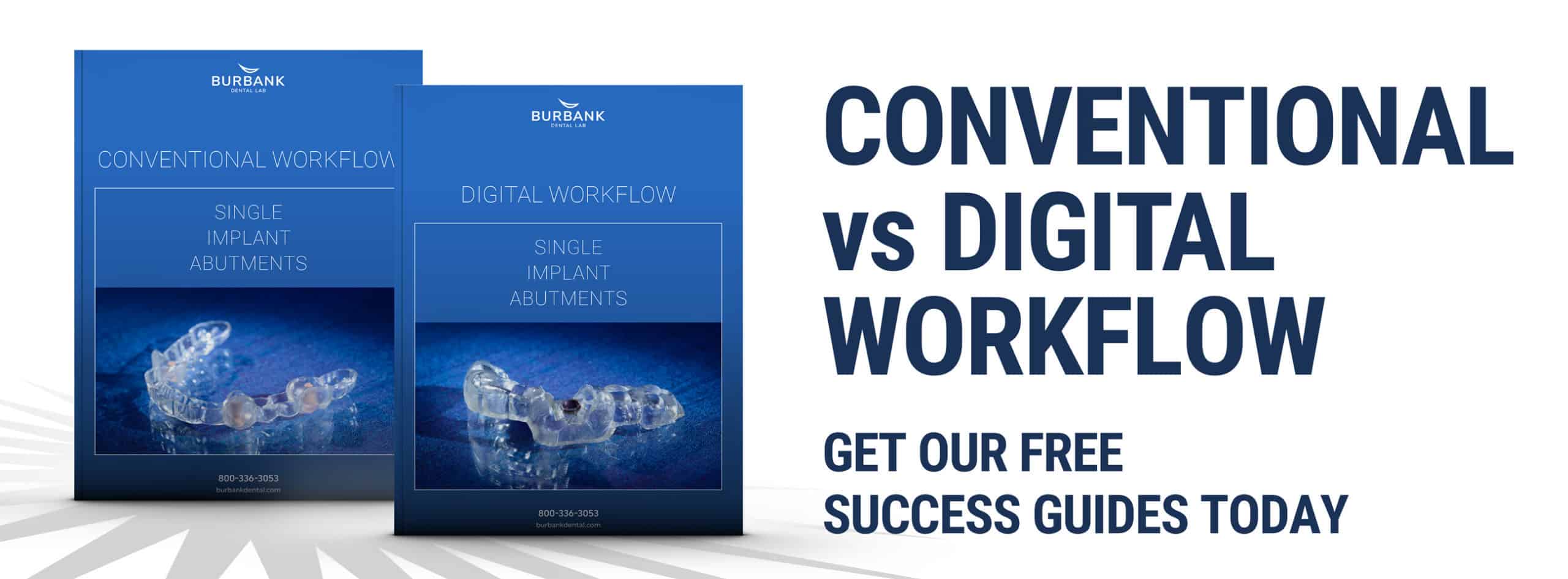
Custom Healing Abutments
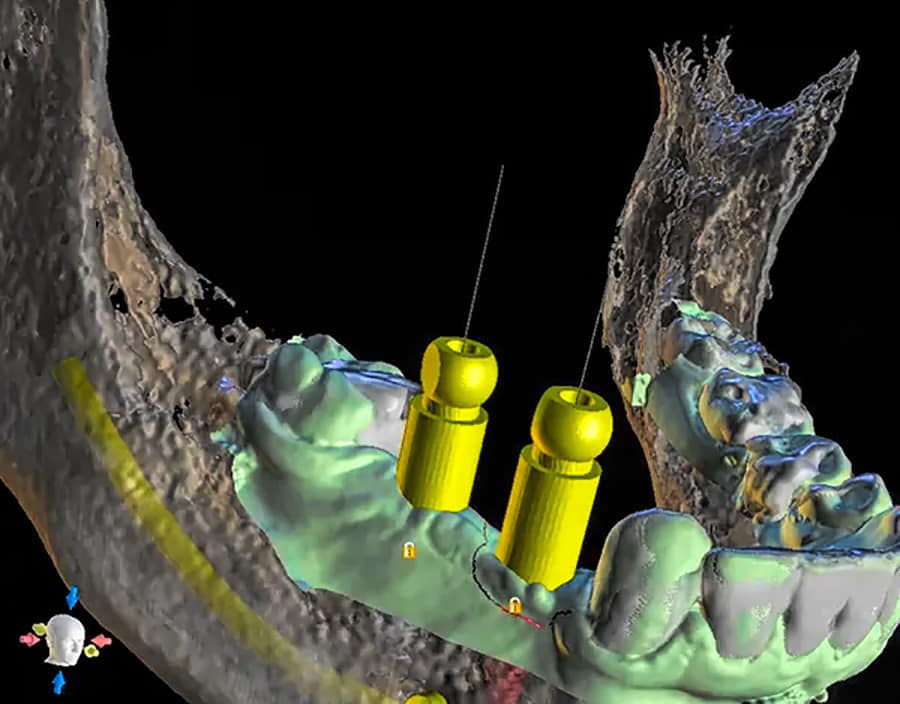
From the data that is gathered from the surgical plan, a guided surgery appliance is fabricated based on the specifics of the ideal implant placement.
In addition, a digital scan body (see the above image) can be placed in the plan digitally. This data can then be used to create a custom healing abutment or provisional that will aid in the healing of tissue to an ideal form, allowing for a natural emergence profile. This will maximize function, esthetics, and the overall health of the restoration.
The two additional benefits of guided surgery are:
- A custom healing cap that will shape the tissue and result in an ideal emergence profile.
- An immediate-load temporary designed to provide an ideal emergence profile. These usually come in two parts, including a titanium base and an implant abutment. These should be bonded together intraorally. First, the base is torqued according to the manufacturers’ recommendation, and then the abutment is bonded on.
To do an immediate load, the following conditions must be met:
-
- The implant chosen for the case must support immediate loading.
- The bone is essential to a successful case and must be evaluated for quality and quantity.
- The implant must be torqued to the recommended NcM.
To create highly esthetic restorations that function naturally, the soft tissue contours must mimic those found in natural teeth. A properly contoured healing abutment can significantly improve the outcome of implant restorations and reduce issues such as food impaction.
At Burbank Dental Lab, we are driven by the desire to provide the best fabrication options with every restoration we create. Our ability to create custom healing abutments and provisionals has greatly improved implant restoration outcomes.
Through digital planning, the process offers a great degree of accuracy and efficiency. Call or chat with Burbank Dental Lab today to chat or speak with one of our implant planning specialists.


